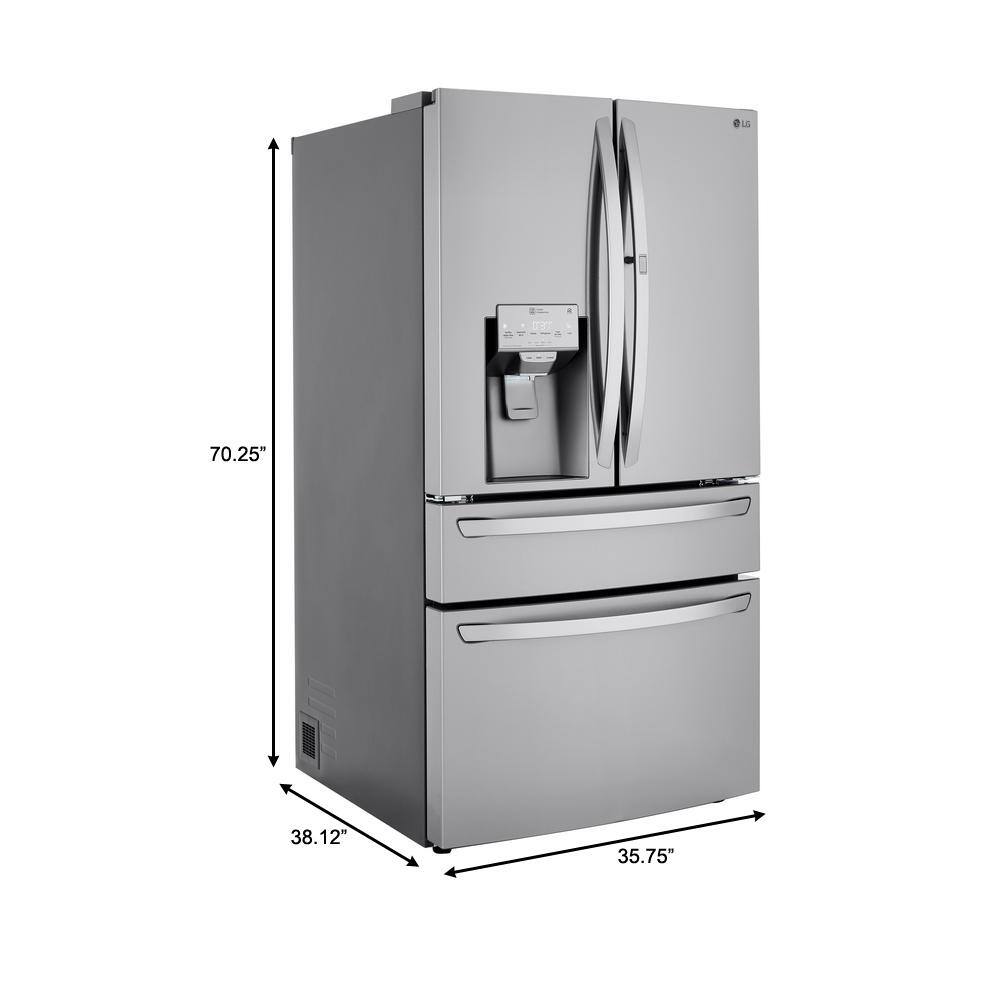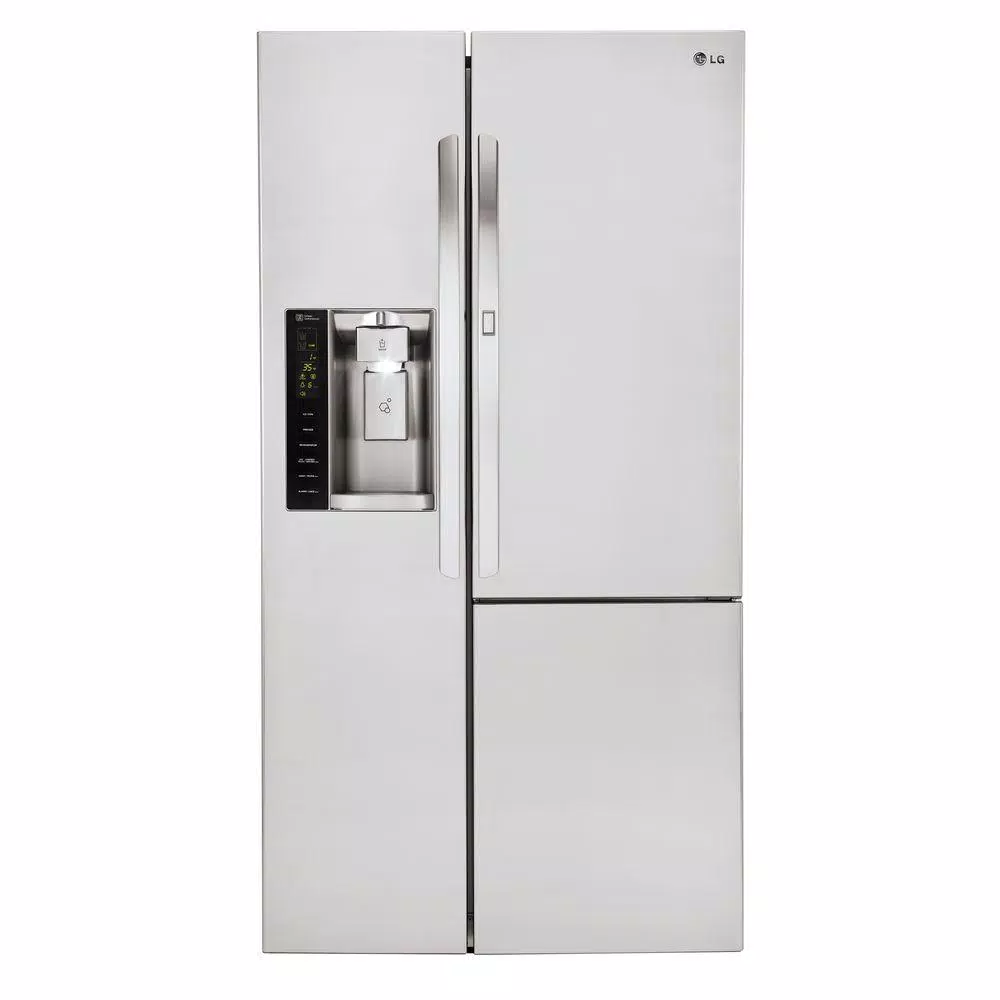Samsung 30 in. W 21.8 cu. ft. French Door Refrigerator in Stainless Steel
Striking, sleek design with ample interior storage space. High-Efficiency LED Lighting helps you quickly spot what you want. Wide Open Pantry stores long, flat, and wide food items.
This beautifully compact stainless steel French door refrigerator offers a robust 22 cubic feet of interior space and at 33 inches wide. Bright LED lighting makes the fridge easy to view and organize and a wide-open pantry allows room for oversized food items that often don’t fit elsewhere. It may be smaller in size, but this compact refrigerator doesn’t compromise on style, space or performance.
- 30 in. wide- fits in smaller, narrower spaces for more flexibility
- 22 cu. ft. capacity – fits all your favorite foods
- Ice maker in freezer – ensures you always have ice cubes on hand
- 2 humidity-controlled crispers – help keep your fruits and vegetables organized and accessible
- Tempered glass spill-proof shelves – makes cleaning leaks and spills simple
- Auto pull-out upper freezer drawer – automatically slides open for your convenience
- CoolTight door – helps prevent cool air from escaping and metal cooling technology maintains a consistent temperature to maintain freshness
- Door alarm – alerts you if the fridge or freezer is left open
- Removable ice cady – so you can have it where you need it
- Gallon door bins – provide more shelf space inside the fridge
- Surround air flow – helps maintain optimal temperatures and ensures air circulates for even cooling throughout the refrigerator
- Contour doors with smooth finish – provide optimal feel, functionality and aesthetic
- Mono cooling system – evenly cools the unit to maintain optimal internal temperatures and keep food fresh for longer
- Color options – also available in black stainless, white and black
- Warranty – (1) year parts and labor on refrigerator; (5) years parts and labor
Additional information
| Depth (Excluding Handles) | 34.75 |
|---|---|
| Depth (Including Handles) | 36.25 |
| Depth (Less Door) | 30.88 |
| Depth With Door Open 90 Degrees (In) | 45.75 |
| Height to Top of Door Hinge (in.) | 66.75 |
| Height to Top of Refrigerator (in.) | 65.25 |
| Product Depth x Height x Width (in.) | 36.25 x 66.75 x 30 |
| Refrigerator Width (In.) | 29.75 |
| Certifications and Listings | UL Listed |
| Manufacturer Warranty | One (1) Year All Parts and Labor; Five (5) Years Sealed System Parts and Labor |






by Bruce
I gave this fridge a week before writing a review. I had an old 23 cu. ft. Kenmore which over the years fell apart (door catches, drawer tracks, etc). My options were limited as my space for it is only 68″ high. Most fridges today in this height range are only 18 cu. ft., and I didnt want to go from a 23 cu. ft. to an 18 cu ft.. This Samsung 21.8 seemed to fit the bill. I was worried about Samsung quality given all the negative reviews, so I opted for the extended warranty. There are always things you need to get used to when going to a new fridge. For instance this one doesnt have the flexibility items like retracting shelves for taller items, but I can live with it. The ice maker only makes one bin of ice every two days, and I can live with that as well. It’s quiet and the temp consistency is very good (checked it with digital thermometer). I love the wide drawer beneath the veggie bins. One week in and overall I am delighted.
by Max
Very quiet ice maker, maintains set temperatures. Very pleased with purchase! In use for over 1 month.
by Lenore
I love French door refrigerators.. I wouldn’t buy anything else..
by Arthur
Freezer door handle seems a little “loose. Love the shelf/drawer arrangement.
by Chris
Very nice! A little smaller than expected but still love it!
by Scott
So fa, I’m happy with my purchase.
by Kathy
The new frig/freezer is working just fine! I’m pleased with my purchase. It doesn’t have any sound emanating from it’s interior!! Believe it or not, my old frig had a slightly larger upper freezer, so there is a bit of change there. The most important changes are the vegetables that are staying fresher much longer and the freezer actually makes things freeze like rocks, not just sorta’ hard like my old freezer!!!